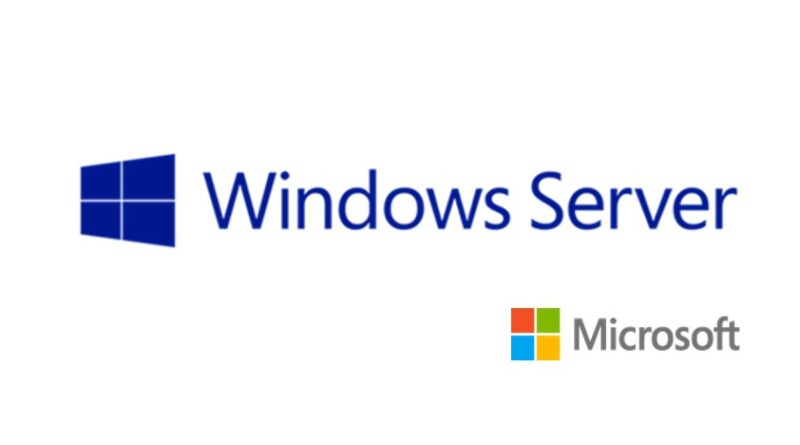Windows Server 2016 Editions Comparison
Microsoft’s server operating systems are the go to server OS for a wide majority of organizations worldwide. Currently holding 33.5% of the market share in this category, it’s imperative that you know more about its most popular windows server editions and their comparisons if you are planning to implement a server OS in your organization soon.
This article specifically deals with one of the most popular windows editions out of total of 8 released by Microsoft yet, the Windows Server 2016 edition.
In it, you have the choice to either opt for Standard edition or Data center editions, with each one offering support to a different type of workload.
Moreover, to give you a broad overview, the Data center is generally more preferable to go for if you have a high demand workload and that’s because this contains features that are not available in the Standard version.
Making the right choice here also helps you avoid licensing issues since Microsoft’s can initiate a license audit request if your hardware is not suitable for running a certain edition.
A wrong move here could potentially cost you the cancellation of the OS along with bringing the entire workload hosting environment to a grinding halt.
But apart from hardware, features and licenses, you also need to pick the right version by learning just how well does it fit within your requirements. And if you plan to use it correctly, you can definitely derive the maximum benefit out of it.
Here is a detailed comparison for the different popular editions of Windows Server 2016:
Available Versions:
Currently, there are four editions you can generally choose from in Server 2016:
Windows Server 2016 edition Hyper-V:
Incredibly suitable for Hyper-V roles, this edition was released by Microsoft as a free variant to run your hypervisor without giving you too many issues with licensing.
This edition is highly limited in that there is no GUI and you can just use it in your virtual environment to work as a hypervisor only. As compared to the actual Server Core, this one is essentially stripped down to the barest of minimums.
The sconfig.cmd command is executed to initiate the hypervisor and once that’s complete. You can deploy a Hyper-V Manager to manage and run the hypervisor.
Windows Server 2016 edition Essentials:
After the Hyper-V comes the Essentials edition which is basically focused on providing virtual server level basic capabilities that any small scale business can suffice with.
While the Essentials Wizard is offered in this pack, it’s still quite similar to the Standard variant as far as the actual GUI is concerned.
The system requires you to continuously deploy the wizard as its wont be of much use without it, but there is an option to essentially disable it when you are required to do.
Virtualization Limitations:
With just one instance each of virtual and physical variants of Essentials allowed to be run for Hyper-V host, this edition is quite limited in terms of compliance.
The physical essentials instance can just run the Hyper-V role, and for that to occur, you will need to stop all other roles from working on it.
Licensing Attributes:
With just 25 users and 50 devices that can be deployed to this server environment, this edition is apt for small scale requirements. The license is CPU based and CALs are not needed.
Maximum Hardware Capabilities:
You will be limited to just sufficing with 64 GB of RAM along with 2 CPUs irrespective of whichever system you are running it on.
Windows Server 2016 Standard:
This windows edition is much more equipped and in terms of features than the Essentials edition and can be really suitable for small to medium sized firms whose virtual environments need to leverage them.
However, if you are looking for high level or advanced virtualization, then this edition might not suit your needs. You will understand more about this edition by going through its various requirements and features:
Virtualization Limitations:
If you have standard license, you are allowed to take up to two virtual machines on it. The same amount is available for Hyper-V containers as well. But just one physical instance is supported.
However, the license does provide a small workaround to host two Hyper-VMs on it. By utilizing the Hyper-V role as a Hyper-V host, this capability becomes possible obtain. And this will all have to happen in one physical instance. No more VMs can be run on top of this physical instance until you are operating under this license.
Licensing Attributes:
This edition is based solely on core and only provides user or device access through CALs. You will not be able to add a user or device to the server without.
Maximum Hardware Capabilities:
This edition i.e. Standard tops out its hardware limits when you reach 24TB in RAM or touch the figure of 512 in cores.
Windows Server 2016 Datacenter edition:
Organizations that have highly complex virtualization environments are generally recommended to opt for this Datacenter edition from the Windows edition Server 2016 series .
This license is much more expensive than other editions so it might put you off a bit but do consider the fact this edition allows you to increase your VMs to as much as you want given that you’ve completed accounted for your host machines.
This is best suitable for those environments where VM numbers are high but cores and hosts to support them remain relatively limited.
Virtualization Limitations :
There is no cap on the number of Hyper-V containers or VMs you can run on this and the licenses just depend on the number of cores that your hosts contain or require.
There is no tab on the roles you want to run either, You can jack the number of VMs to as much as you want on any of these roles.
Licensing Attributes of Windows editions:
While this is core based just like Standard edition and requires CALs to validate access for users and devices, this editions differs in the fact that you will need to be careful to run it on a physical server that has the capability for virtual machine hosting. If you don’t see this through, Microsoft could cancel your license causing you a hefty financial loss.
Running The Windows Server 2016 Editions:
To ensure that you are utilizing your Windows server 2016, irrespective of whichever windows edition you opt for, you will need to hone your skill gap by undergoing three important certifications that address different aspects of this server OS.
The first one deals with installation, storage and compute capabilities, the second one covers networking in this server OS with extensive detail and the third one focuses solely on ccie based router switching protocols and mechanisms. When you are through with these certifications, you will be able to understand the capabilities and limitations of each edition in a much better manner, thereby gaining the skills to run a particular edition of the server OS in the manner best suitable for your firm’s unique virtual environment.




